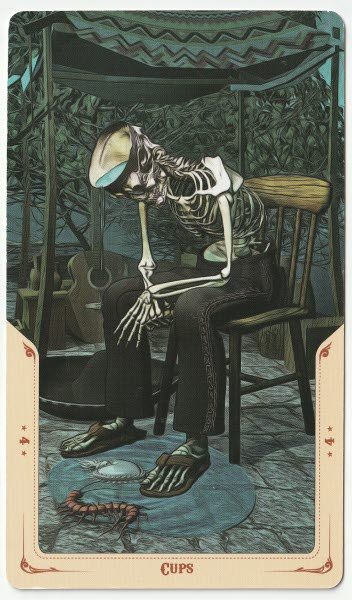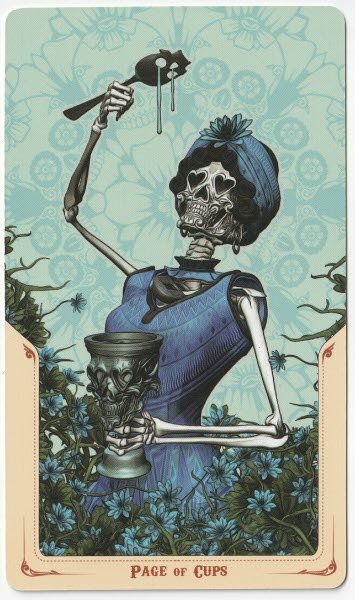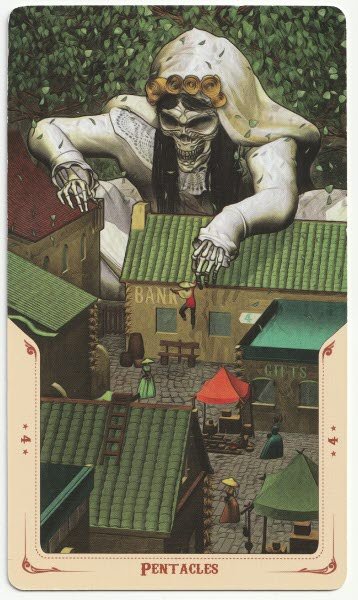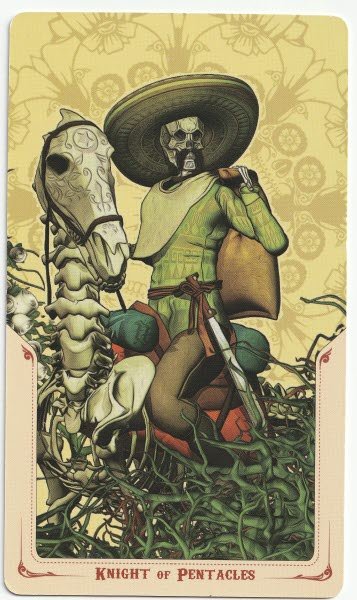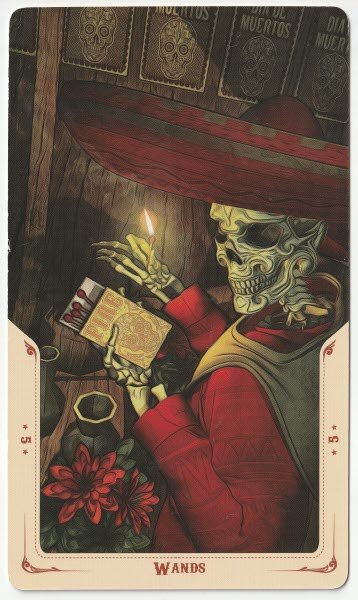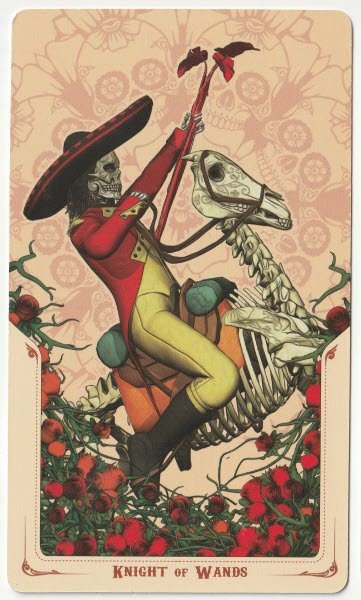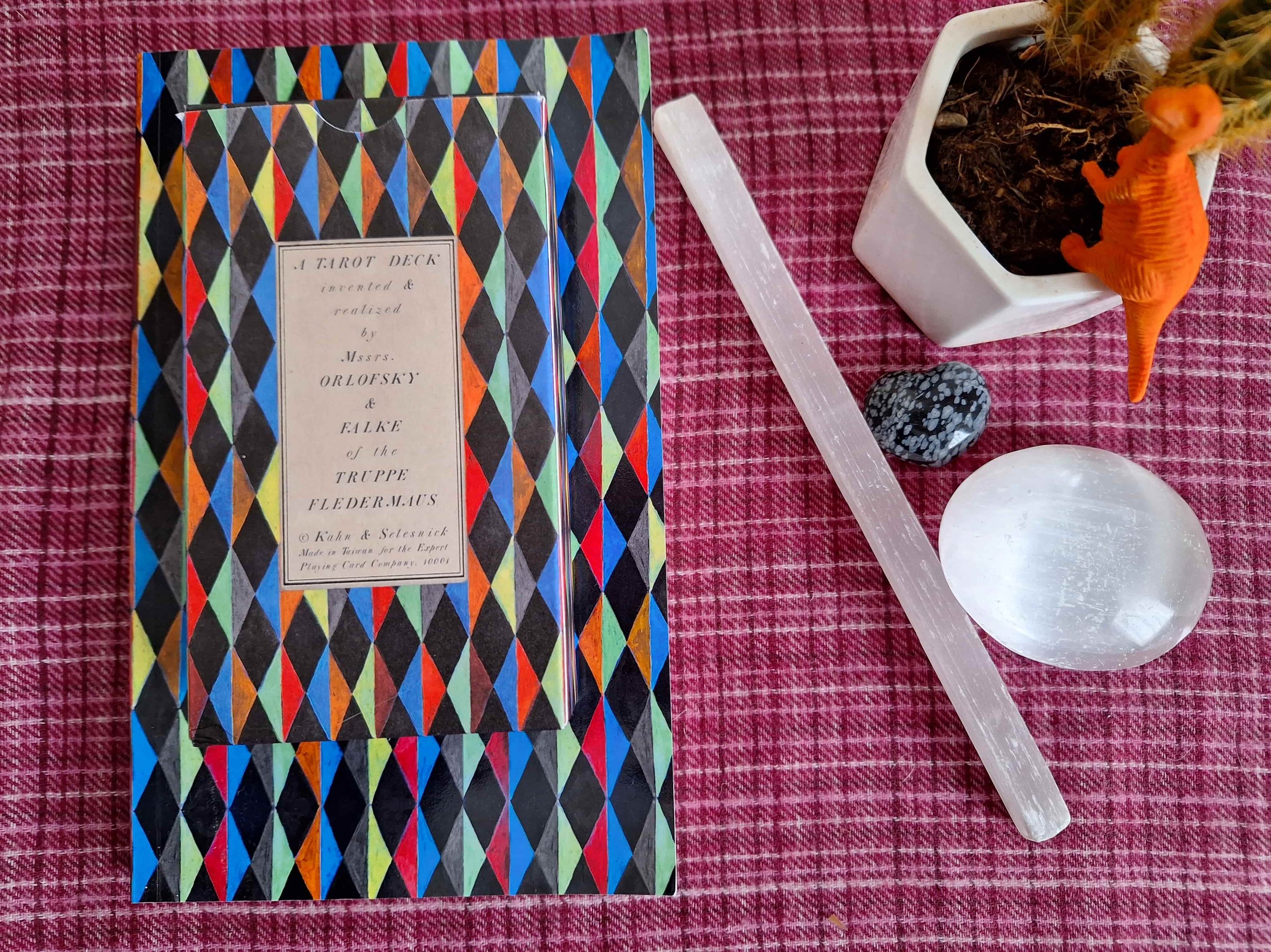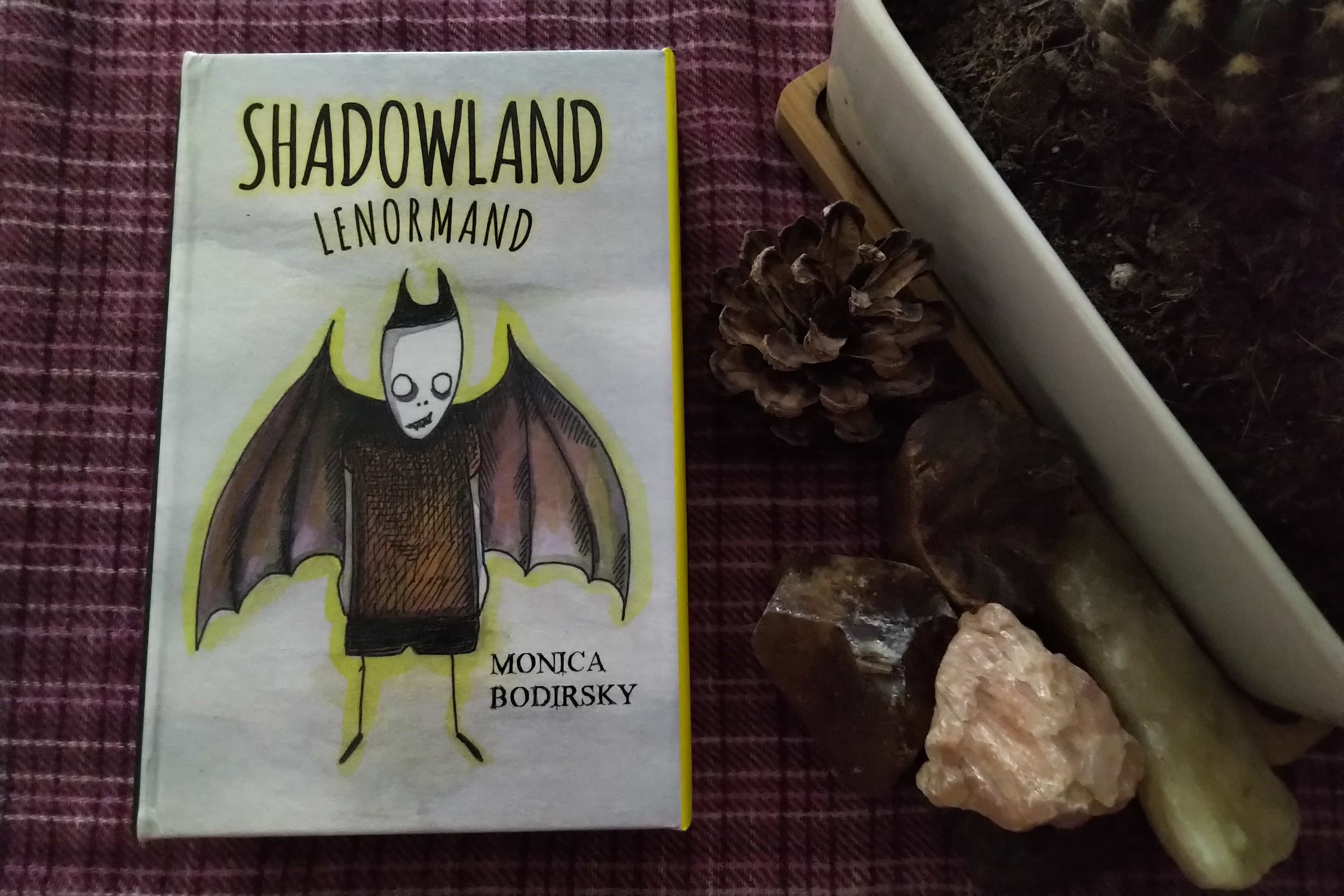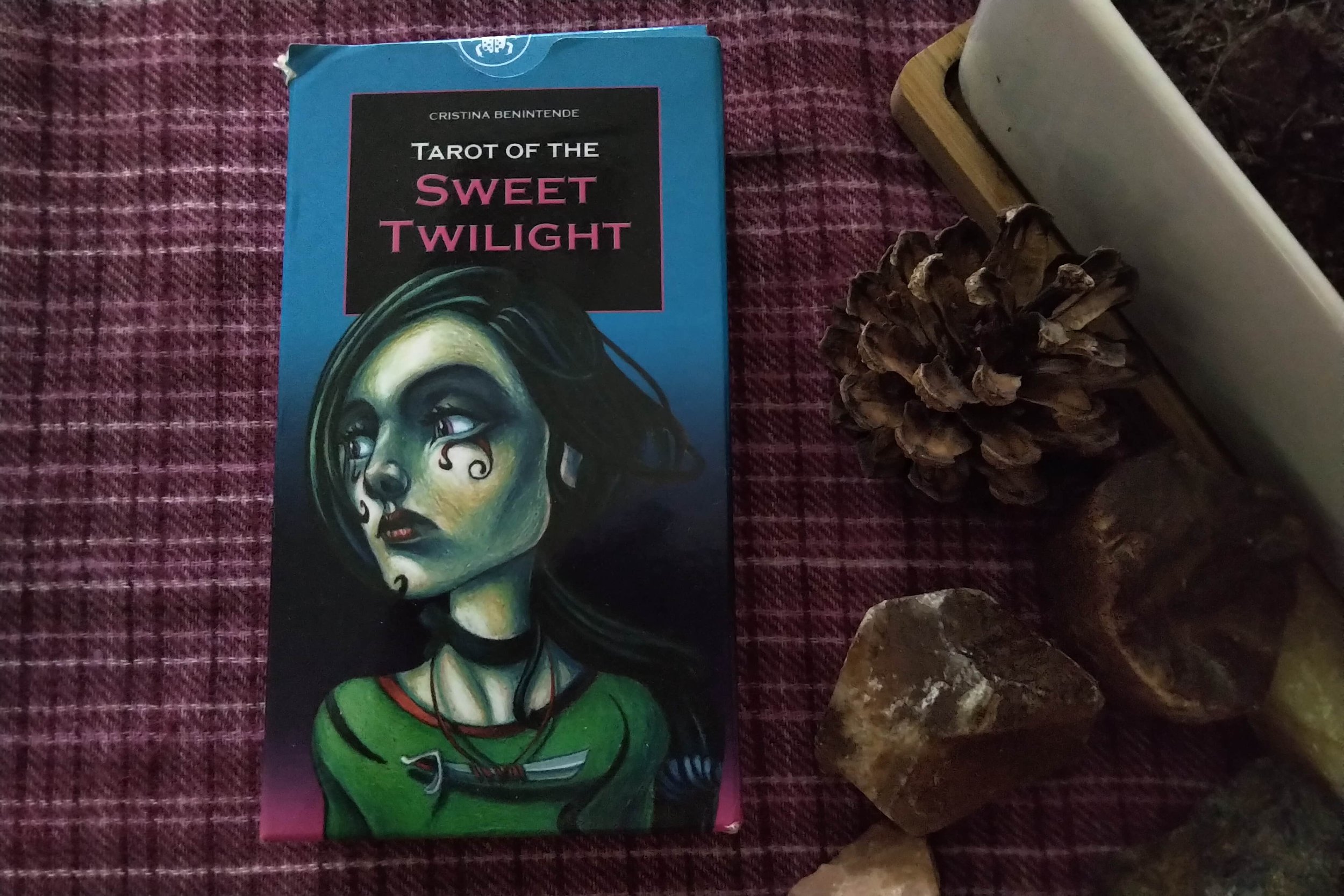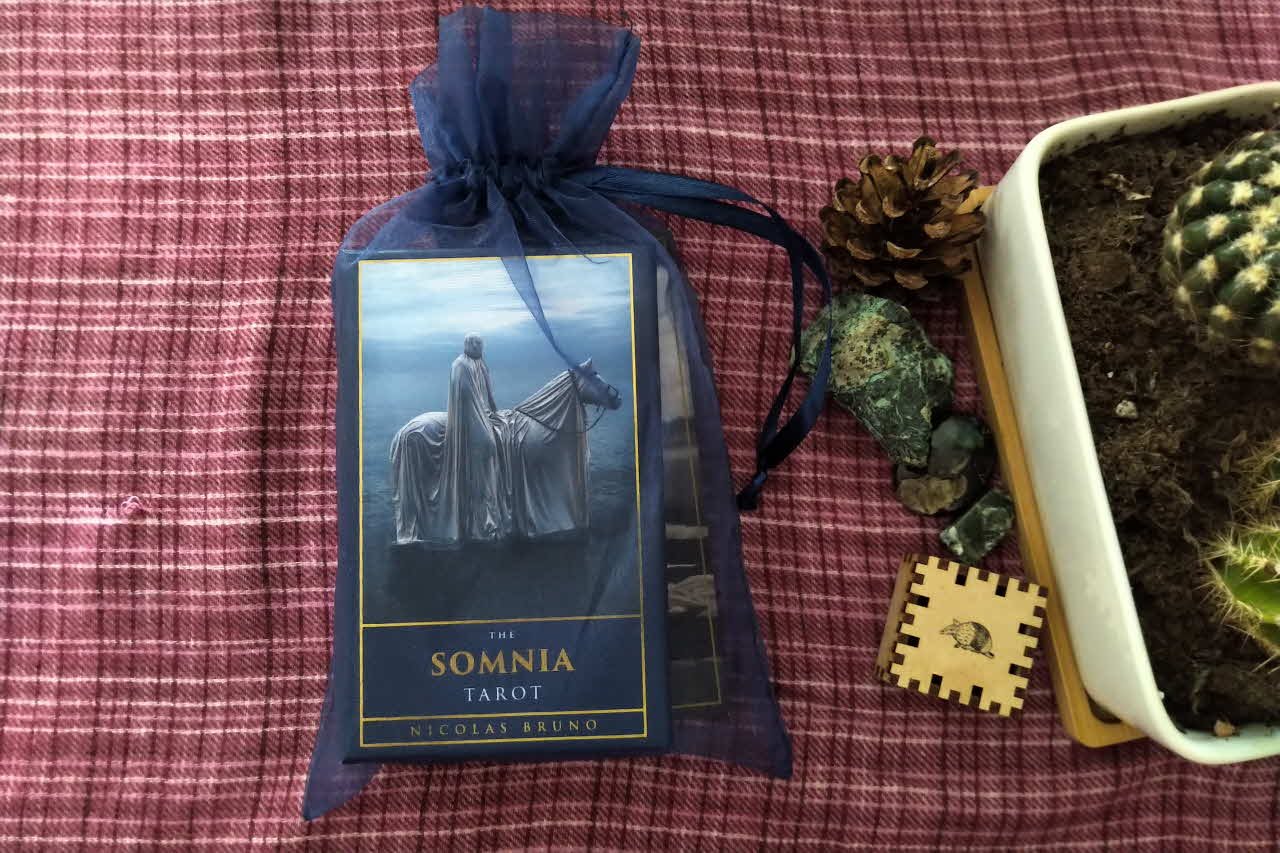The Santa Muerte Tarot


The final deck arrived a day after the others, and the first impressions were of the quality and strength of the design. Fabio Listrani created The Santa Muerte Tarot in 2017. The card quality is excellent, and it came in a nice sturdy box which is incredibly decorative. The artwork is strong, the colours are incredibly bold, and I absolutely love a handful of the cards for the symbolism. I’ve managed to narrow it down to seven cards for the sake of the length of this post, but I’ll only give complete booklet interpretations for two. Unlike the Moonology Oracle, these cards don’t stick together. In fact, they’re the complete opposite. I was walking around the kitchen whilst shuffling, and they shot straight out of my hands; the fuckers are so slippy that half of them ended up under the fridge. When I ordered these, I was hoping to use them as my new main deck one, thanks to my old Deviant Moon no longer working for me, but I don’t think that will happen. I will need something different because I don’t think these will work for me as a main. My instincts tell me I want to keep them for specific purposes rather than general readings. But then I really do hate breaking in a new tarot deck.
Anyway, let’s start with The Hierophant — We have a cool-looking dude with the longest beard who sits kneeling at a small table with a spirit board on top. He has one hand on the planchette and the other held aloft with two fingers pointing up towards the sky. He’s wearing a sombrero, but I feel he is missing a fat reefer and should probably be listening to some Bob Marley. The booklet says: “The Hierophant in this case fully incarnates in his role of mediator, a bridge, capable of connecting what is above and what is below, what was with what will be. The wisdom that comes from our ancestors and from the collective consciousness they created, freely flows in this mature figure, capable of communicating, clarifying, helping and protecting, as well bringing and attributing and ideal to our actions. He becomes particularly negative however whenever fanaticism takes the upper hand, transforming his figure into a false and intolerant guru. The Advice of the Dead: Once you have analyzed the situation with foresight, your means and what you are able to communicate, proceed towards your objectives and your ideals.” I love the advice of the dead bit at the end of each card interpretation and think it’s a nice addition. I feel it compels the reader to focus on the importance of living. It’s the anti-bullshit or cut-the-crap-here’s-the-important-bit takeaway piece of advice to get the most from a situation. The ‘advice of the dead’ is a good reminder that despite the human tendency to remain in denial of death, we have a finite amount of time to achieve anything at all in life.
To me, The Sun card in this deck is reminiscent of the old Vitalite margarine ad. It’s such an upbeat card, I mean, it’s probably the most upbeat Sun card I’ve seen in ages — the irony being it belongs to Our Lady of Holy Death Tarot and has skeletons on it. The sun itself is a combination of both sunflower and skull. Two guys play the guitar surrounded by yellow flowers; they look happy and full of life. A bird hovers with the tip of its tail on a sunflower leaf; it looks like an oversized hummingbird. “The advice of the dead: Move ahead on your projects with serenity as they can now derive energy from a new luminous source. Leave all of your worries that darken your life behind you.” The ‘don’t worry, be happy’ vibe is coming through strong with this one. The abundance of flowers suggests a time of fertility and growth. We can also infer that this card showing up says there will be more than enough joy and abundance to share with others. Happy times are certainly ahead. Music and singing may also be a prominent theme whilst this card is active for someone.
The minor arcana cards are symbolically rich and bold in colour, but I wouldn’t say they are detail-heavy. The first card I want to share is the Two of Swords. There is no way those scissors are cutting anything because the blades aren’t going to meet, so I’m unsure whether this is deliberate or a simple lack of attention to detail. Traditionally, the Two of Swords speaks of indecision. From the booklet: “The moment at hand seems particularly difficult, something is not working — as if the two blades are working against each other instead of collaborating. The two of swords therefore pushes for a confrontation, for the attainment of an alliance which in the end will find a balance capable of inverting and clearly separating the contrasts, the diversities and will transform them into points of strength and cooperation. The advice of the dead: You can put your trust in others only afterwards, therefore for now work to clear things and to reach a point of meeting between the two conflictual questions.” I don’t find this response especially clear, but there does seem to be the suggestion to make sure you have all the information to hand; you have to confront the issue once you’ve identified what isn’t working. Find the opposites, and then you can see what is good and bad in both. From there, you can find the balance which ensures cooperation. You can only put your trust in later because you have no idea if the other will uphold their end of the bargain. And there usually is a bargain being made here; compromise is always indicated in any card stressing the need for cooperation.
The Three of Swords is brutal, and where most decks only have a single person, The Santa Muerte pulls no punches showing the wounds being inflicted by another as a skeleton sits on the head of another and plunges two knives into his back. The third sword is laid across the hands of the skeleton bent over on the floor; he doesn’t wield it for protection or attack and instead just looks at it. A classic card that indicates heartbreak, betrayal, and separation, the Three of Swords is one we all wince at when it appears in a reading. “The advice of the dead: Use all your rational abilities of evaluation and analysis as this is the moment to be cautious and prudent in decision-making and in facing new activities.” When I look closer at the image, I realise there are no hearts here, and I wonder if that eliminates the traditional meaning of heartbreak in its interpretation. The swords in the back certainly reinforce the message of betrayal. The skeleton on the floor has blood on his sword, but it is not clear whose blood it is. Did he strike the first blow, or is the blood his own?
The Two of Cups is a sweet card and shows a skeleton couple in a loving embrace. Her hand reaches through his rib cage to touch his heart, and water flows from his skull into hers as he leans his head towards her. The card's energy expresses how she touches her heart, and he fills her head with thoughts of love - water representing the emotion he wants to give her. “The advice of the dead: Gain wellbeing and happiness when you have rightly accumulated it but also when you have received and prepared for the next steps to take.” I usually like to see the two of cups in a reading if it’s the early stages of a relationship. I see it as a sign of optimism and hope, but it rarely indicates if the relationship will go the distance. Yes, it indicates romance and true feelings, but we need much more than that to ensure success and commitment. Vegetation dominates the background, suggesting that this couple has already created resources to provide sustenance in leaner times. The two of cups in this deck is a strong card — more so than in many other decks.
What struck me about the Five of Cups is the use of a maze in place of the mind. A maze features strongly in the Greek myth of the Minotaur, and I mention it here because I wonder about the correlation to the Five of Cups and its traditional meaning of disappointment in love and a wish that things could be different. There is often a sense of loss when looking back at the past, but connected to relationships that haven’t worked out in the desired way. “The advice of the dead: Stay with your emotions and let them overwhelm you. Let them flow and follow their course, as only in this way will you arrive at a new harmony and alliance.” The story of the Minotaur has a central theme of loss and abandonment around one of the main characters, Ariadne. She helps Theseus defeat the Minotaur in return for marriage, but he abandons her on the island of Naxos after the mission is complete. She’s left heartbroken, but the story ends well because Dionysus sees her and falls in love with her. The five of cups is more like when she first wakes on the island and finds herself abandoned. The skeleton on the card is immersed in water (representing emotion), but the head and shoulders remain above the water. There’s a real feeling of balancing thought/logic with emotion here — Ariadne and Dionysus is the archetypal marriage between logic and emotional abandon. I find the correlations between the myth and this card to be intriguing.
The Three of Pentacles focuses on the hard work aspect of the traditional meaning. A skeleton waters a row of plants, and I find it interesting he’s wearing clothes and a hat but no shoes. We are being shown what is under the ground and can see the flowers originating from buried skulls. “The advice of the dead: Persevere without hesitation towards that in which you are placing all your physical and economic reserves, without letting anyone trample on your harvest.” Of the three plants growing, we can see the one behind him has already flowered and the one in front, whilst sprouted, has yet to flower. The plant beside him is in an even earlier stage of development, which is a good solid representation of a progression. Rewards for work will produce results, but we shouldn’t wait to see them before moving on to the next project. His bare feet remind me of the need to stay grounded and connected to the earth.
I love this deck, and after taking a closer look, I feel they may be easier to work with than I initially anticipated. I don’t think this would make such a great deck for beginners because some of the symbols are not easy to interpret, and it does stray somewhat from traditional interpretations, although not wildly so. Despite its theme, it feels like a fun deck and has a good vibe. It doesn’t shy away from shadow or darkness but keeps the light flowing at every opportunity. A well-designed deck with some lovely twists thrown in for good measure.
































